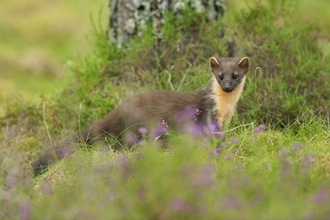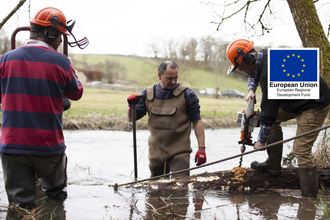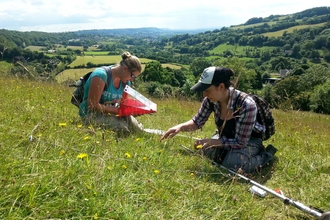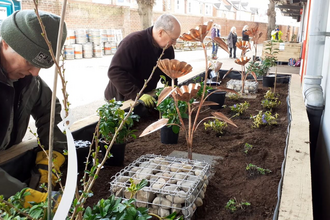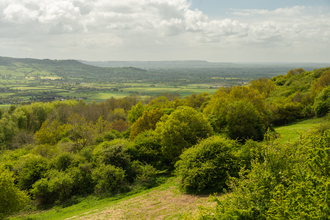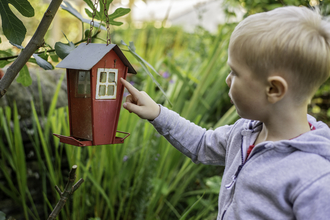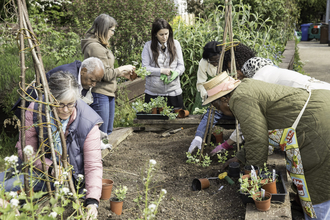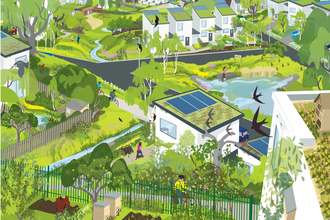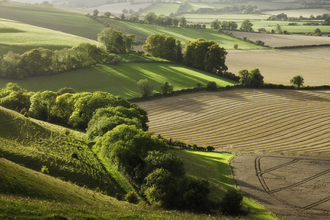Conservation projects
From restoring rivers in the Cotswolds to reintroducing pine martens, our conservation projects are working to secure a brighter future for both wildlife and wild places across the county.
Click the names of the projects below to learn more about some of our other current conservation projects.
Golden valley communities for insects
The Golden Valley is famous for species-rich grasslands and butterflies, within 4km of gently rolling banks in the heart of the Cotswolds from east of Stroud Town to Sapperton. Our 10-year vision for the area is to create a nationally recognised, wildlife-rich landscape, resilient against future environmental and climate change, by targeting habitat improvements for insects. This project will deliver the first pivotal part of this vision.
Across the Cotswolds, 96% of species-rich grassland has been lost since the 1940’s. Numerous plants and insects are found nowhere else and have declined dramatically; fragile refuge populations threatened by habitat fragmentation are left isolated on well-managed nature reserves.
We will create a landscape where threatened insects can thrive by enhancing, expanding, and connecting existing GWT and the Royal Entomological Society's (RES) wildlife-rich reserves, including Daneway Banks home to the largest, critically endangered large blue butterfly population. We will work with 71% of the valley’s landowners and our local volunteer group through species-specific management across 23.8ha:
- Coppicing 1ha of woodland
- Creating scalloped edges along woodland rides
- Removing scrub from 1ha of woodland
- Cutting 0.6ha of meadows
- Installing 3.9km fencing and water supplies to enable conservation grazing
Benefits
- Landscape will be enhanced and conserved by empowering landowners to make long-term changes to manage land for wildlife.
- Increased resilience of endangered and threatened insect populations, including 29 BAP species.
- Insect sightings increase for thousands of people using the extensive network of public footpaths across all project sites.
This project wouldn't be possible without our funders. The lead funder for this project is Biffa Award, with match funding from Cotswolds National Landscape (CNL) and Royal Entomological Society (RES).
Wild places
The twin threats of climate change and the loss of wildlife need urgent action and the way land is managed can have a significant impact on both. In these projects we look at a long-term view, putting in place sustainable solutions to climate change and reverse the loss of wildlife.
Environmental Land Management Scheme
As part of GWT’s work trialling options with DEFRA for the new Environmental Land Management Schemes (ELMS) we can provide a business analysis of current incomes together with possible opportunities from future stewardship agreements, including ELMS.
You can find out more about ELMS here.
Community projects
Find out more about how we are working with local communities, from bringing together communities to improve hedgehog habitat connectivity, to supporting carers and connecting them to nature.
Click the project names below to find out more about other current community projects.
Carers in nature
From March 2021 we will be running a programme of horticulture and nature activities for carers in Gloucestershire. This will give carer some much needed respite from their caring work. They will have the opportunity to attend sessions at Robinswood Hill Country Park in Gloucester, and learn about wildlife gardening, go on nature walks, and create features for their own gardens.
Supported by the Gloucestershire Clinical Commissioning Group, carers will be given support to attend sessions where needed. Research carried out by Gloucestershire County Council in 2020 showed that carers are most looking forward to getting outdoors in nature and gardening following the pandemic. Carers in Nature will allow carers to do this in a safe, and guided environment. It will also demonstrate the benefits nature and green spaces can have on improving our health and wellbeing.
Milton Avenue Green Space in Podsmead
We have been working with the Podsmead (Gloucester) community since 2016 at the Milton Avenue Green Space. This is a great space for wildlife with a balancing pond, small woodland and wet grassland. Surrounded by housing, but full of wildlife, this green space had become overgrown and unloved. Working with the community the Trust has improved habitats, created interpretation features and increased usage by local people. This work continues and is in partnership with Podsmead Big Local.
Return to the Hill
Since 2013 the Trust has been working, in partnership with Gloucester City Council, at Robinswood Hill Country Park in Gloucester to improve engagement by local communities with this green space. We have run events, education sessions and volunteer days.
‘Return to the Hill’ is a two-year project which began in January 2021 supported by the ‘National Lottery Heritage Fund’, Gloucester City Council and Gloucestershire Gateway Trust. Working with local partners such as Age UK, Star College, and the World Café, this project aims to make the reserve a place for everyone in the local community.
There are three main arms to the project, all with the aim of making nature more accessible to all:
1. Memories of Robinswood Hill
Collecting stories, images and memories of the site from local people in the community. This will then be displayed as an exhibition in our new building. If you have a story or photo to share, please contact jenny.griffiths@gloucestershirewildlifetrust.co.uk
2. Improving Accessibility of the Hill
We will have access to a Tramper mobility scooter for hire, and will be working with Star College to look at wheelchair friendly routes. We are going to develop some ‘all weather’ explorer backpacks and offer welly hire so that the site is easy to enjoy year-round.
3. Increasing diversity
We are developing some ‘wildlife champion’ volunteer roles to help us think about how we can reach out to members of our community who don’t always know about us or think of visiting. This will include some events celebrating different local cultures, and some ‘takeovers’ of our café on site with delicious themed food offers.
Nature Tots
A monthly ‘Nature Tots’ group has been launched, running outdoor activities for pre-schoolers to enjoy. This is building on the success of our other groups at Crickley Hill, Greystones Farm and in the Forest of Dean. Check for upcoming sessions on our events page.
Barton Street nature highway
Nature Highways create corridors for wildlife to travel between larger existing green spaces, often through urban built up spaces that can be deserts for wildlife. They create connectivity for wildlife, such as pollinating insects and birds. They also improve the physical and mental wellbeing of local residents. Benefits to people can include improved air quality, opportunities for getting physically involved in green infrastructure improvements and maintenance, but most importantly can have positive impacts on people's mental wellbeing. Many studies show that just viewing nature can have a positive impact on our brains, helping reduce anxiety and stress and increasing attention capacity, creativity and our ability to connect with each other.
Although Gloucestershire and Gloucester residents are fortunate in having large amounts of accessible green space in many areas, this is not the case universally across Gloucester and some wards have below the minimum green space standard (set by the City Council). Barton Street is located in one of these wards, which also sits within the 10% most deprived areas nationally on the indices of multiple deprivation, but also within the 10% most deprived nationally for health deprivation and disability. Barton is a very multicultural ward, with over 50 languages spoken, which also creates challenges for health. Barton Street, which runs through the centre of Barton and is a hub of activity for local residents with shops, a doctors surgery and police station, is a main route through the city of Gloucester and as a result has poor air quality, which exceeds air quality standards.
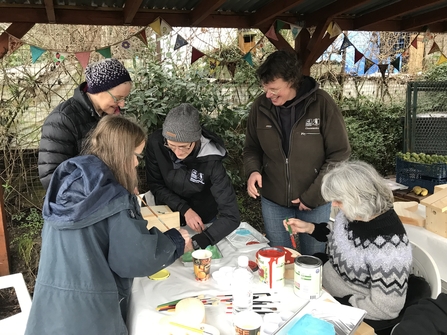
Barton Street engagement work (c) Heather Moore
Funding was given by the Gloucestershire Clinical Commissioning Group to implement green infrastructure and artwork along Barton Street, over a year period. In this time, GWT have installed three large planters with wildflowers for pollinators, re-planted current planters, mini-planters have been made and planted up for businesses, the doctors surgery has been planted up, community artwork has been dotted along the street, and a mini-orchard has been planted. Over the final month, over 500 bulbs will be planted, bird boxes will be hung, wildflowers will be sewn, and a large mural will be painted on a bare wall, along with floor artwork. Local residents and businesses will care for the plants, and hopefully both wildlife and the community will benefit from these positive changes.

Evidence
Ensuring that our work to conserve and restore Gloucestershire's wildlife and wild places is evidence-led. From ecological monitoring and citizen science, to policy development and scientific research, we use a holistic approach..
Severn Treescapes
Severn Treescapes is a Gloucestershire, Herefordshire and Worcestershire Wildlife Trusts’ partnership project working across the three counties.
The ambition is to create a 60-mile corridor of enhanced tree cover to connect two of England’s largest semi-natural woodlands. The corridor will stretch from the Lower Wye Valley and Forest of Dean in the south, to the Wyre Forest in the north.
While we might think of the Lower Wye to Wyre landscape being well wooded, after all it does contain two of the country’s larger forests, the wider landscape has seen a continued reduction in tree coverage.
Reasons for this include the removal of some traditional orchards and hedgerows, both of which are important habitats, and the loss of many trees both in fields and hedgerows due to Dutch elm disease. These problems are exacerbated by ash dieback and the increasing frequency of extreme weather events.
This project will build on remaining pockets of ancient woodland to create a climate resilient landscape, all within 30 miles of the homes of around 8 million people.
HabiMapping
HabiMap is a rolling citizen science programme to carry out detailed surveys of all habitats across Gloucestershire every 10 years.
Habitat evidence is already partly available from local and national data sets including satellite mapping, but some of this is old and satellite mapping can’t determine habitat quality – for example it doesn’t separate reseeded rye grassland from wildflower pasture, or show what is growing under woodland trees.
The HabiMap programme will improve the accuracy of the data that can be used by landowners, farmers and communities to inform environmental decisions.


